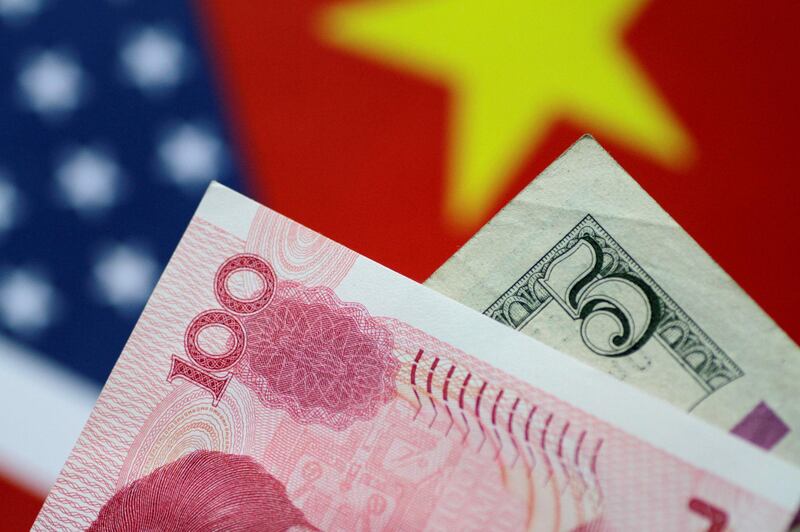The outlook for emerging Asian currencies has brightened for the coming year as the trade dispute between the US and China has further underscored a weak dollar view, but that uncertainty has also dulled the yuan’s allure, a Reuters poll found.
While Asian currencies, which are heavily exposed to global trade, should have taken a hit from the ongoing tit-for-tat trade row and on expectations for faster rate hikes from the US Federal Reserve, most of them have gained this year.
The latest Reuters poll of nearly 70 foreign exchange strategists polled April 3-6 showed most emerging Asian currencies will appreciate anywhere between 0.5 per cent and 3 per cent by this time next year against the dollar.
The US currency is down around 2 per cent this year and the outlook has dimmed further as the dollar has fallen in recent weeks.
“The prospect for Asian currencies is still very strong based on the weak dollar scenario,” said Prakash Sakpal, ING Asia economist in Singapore.
“Coming into 2018, exports haven’t fared badly. Although we may have a potential risk to the economy from the trade war, that is still not the baseline expectation. The pressure for more subdued war is in place.”
In line with those expectations, a separate Reuters poll on positioning showed bullish bets on most Asian currencies increased over the past two weeks.
But the latest poll showed the Chinese yuan, which posted its biggest quarterly gain in a decade in the previous quarter and is up about 3 per cent against the dollar so far in 2018, was set for a dull year ahead.
The yuan is now forecast to shrug off some of those gains and fall 0.8 per cent to 6.35 per US dollar in a year from around 6.30 on Friday. But the 12-month consensus is stronger than the 6.40 expected in March.
______________
Read more:
Saudi Arabia to stick to dollar, riyal debt issues for now, official says
Tunisian currency needs further weakening to stimulate economic growth, IMF says
______________
“We expect CNY to slightly depreciate again over the coming quarters against the USD, due to weaker growth prospects for the Chinese economy,” noted analysts at Commerzbank.
A series of Chinese data over the coming weeks is expected to show the world’s second-largest economy, which is still largely export-driven, has slowed slightly partly due to the growing risks from the Sino-US trade row.
Export growth may get worse with an escalating trade dispute. China has vowed to fight back “at any cost”.
Still, about 45 per cent of over 60 strategists who had a 12-month view, forecast the yuan to strengthen, including the most optimistic call for it to rise to a record high of 5.90 in a year.
Expectations for yuan appreciation have been driven by the recent trend of a stronger official guidance rate by the People’s Bank of China.
The trade spat has led some to view Beijing as amenable to letting the yuan rise at this stage to mitigate some of the tension.
“Though markets occasionally treat US President Trump on trade as a paper tiger, that is not the case in Beijing as a stronger currency is again proffered as an olive branch to Americans,” noted Sook Mei Leong, ASEAN head of global markets research at Mitsubishi UFJ Financial Group.
China’s central bank also raised the rate on 7-day reverse repurchase agreements by 5 basis points to 2.55 per cent last month just after the Fed’s rate hike - mostly to avoid risking a resurgence in capital outflows from China.
Improved foreign investment inflows will be a supportive backdrop for other Asian currencies, the poll showed.
The South Korean won was predicted to gain over 1 per cent on improved sentiment following a renegotiated trade deal with the United States. The Singapore dollar is forecast to gain 2.7 per cent.
The Malaysian ringgit is forecast to appreciate around 2 per cent this year despite political developments that made way for general elections sooner-than-expected.
The Indian rupee, which has had a rough year so far falling nearly 2 per cent, is seen paring those losses and fetching 64.40 in a year, up 0.8 per cent from 64.90 it was trading on Friday.
While those forecasts are largely driven by bets against the dollar, the rupee will also be supported by expectations the Reserve Bank of India is more likely to raise rates rather than cut over the coming year.






